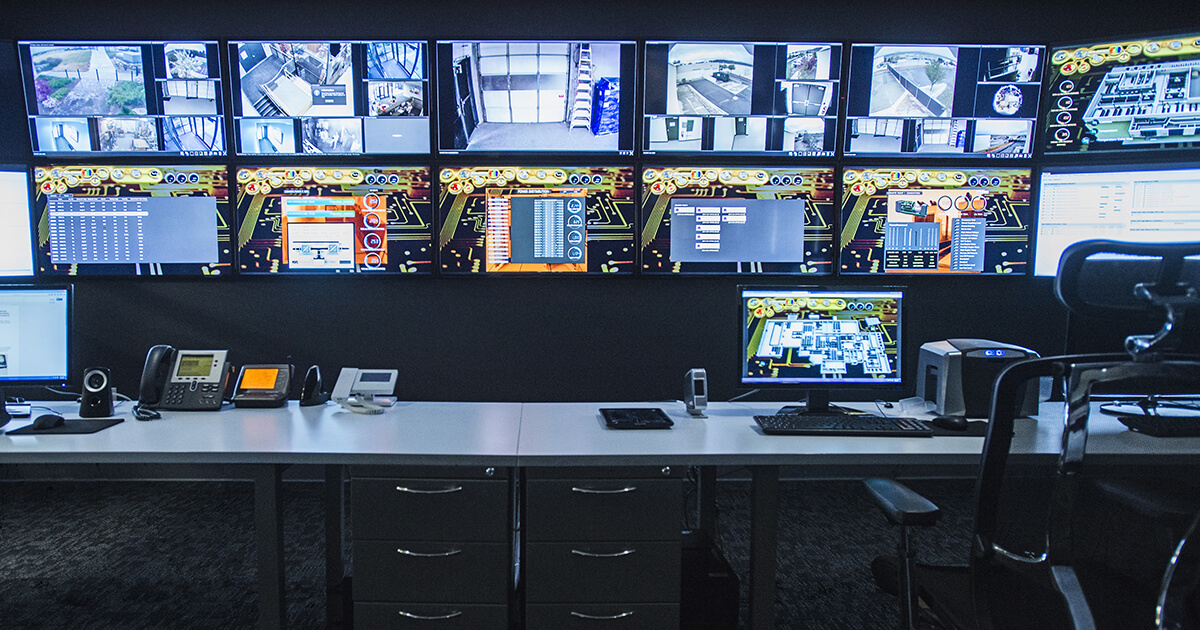QLED vs OLED: Which type of TV is better?
QLED and OLED are among the most popular technologies when it comes to choosing high-performance TVs and monitors. These two screen technologies differ in the way they work. OLED screens use self-illuminating diodes, while QLED uses LED backlighting to illuminate the pixels. Which technology meets your needs the best?
What is QLED?
QLED technology is based on pixels. Each pixel has a colour value, which forms the basic structure for every image we see on TVs, smartphones, or monitors. They also provide the resolution, contrasts, and colours on screens. QLED technology turns pixels into images using a blue LED backlight that illuminates liquid crystals and a layer of nanoparticles called quantum dots. QLED is considered an optimised version of LED or LCD screen technologies, which also use a backlight and a ‘liquid crystal display’, but they lack the quantum dots.
QLED’S advantage is the additional quantum dots layer, which is in the liquid crystal layer. Quantum dots combined with the backlight and the LCD layer guarantee brighter and more intense colour values. QLED boasts very high contrast and detail richness, intensive colour reproduction and very high brightness values.
What is OLED?
OLED screens are in the segments of televisions, monitors for PCs and laptops, as well as in smartphones and game consoles. OLED stands for ‘organic light emitting diode’. OLED technology is special as it does not use backlighting for the pixels, unlike QLED and other image technologies such as LED. The pixels light up independently using organic, carbon-based light-emitting diodes.
Another special feature is that the self-luminous diodes can switch on and off. This enables deep black tone imaging and better contrasts. The adjacent diodes in OLED provide precise colour control, which ensures sharp resolution, very high contrasts, sharp colour edges and brilliant, intense colours, even at lateral viewing angles. No backlighting also allows for a thinner screen design. However, this is associated with lower brightness.
Many OLED monitors offer a higher refresh rate compared to QLED. This is particularly beneficial in gaming for maintaining a razor-sharp resolution during fast frame changes.
Similarities between QLED and OLED
QLED and OLED are in the upper class of screen technologies. They both surpass Full HD screens with resolutions in 4K and 8K. If you’re setting up your own home cinema or looking for a top monitor for your home office, you should consider QLED or OLED.
Differences between QLED and OLED
The differences are clear from a technical point of view. QLED has more advanced LCD technology that uses LED backlighting, a liquid crystal layer and an innovative quantum dots layer. OLED eliminates the backlight thanks to self-luminous diodes that also switch on and off independently.
QLED screens offer very high screen brightness, sharp resolution, and high colour brilliance, while OLED screens offer deeper blacks, sharper contrasts, and better colours. Therefore, OLED has better colour accuracy than QLED. This is important if you depend on high colour accuracy in the colour spaces CMYK and RGB for design jobs.
In addition, OLED models usually have a very high refresh rate, a lighter construction and a higher viewing angle thanks to the absence of a backlight. OLED’s disadvantage is its sensitivity to external influences such as oxygen and UV radiation. LED organic diodes have a natural expiration date. OLED screens last around 20,000 hours, while QLED with non-organic diodes have a service life of up to 100,000 hours.
If you want to connect two monitors or have different requirements for home cinema and home office, you could use QLED as a second screen and OLED as the main screen.
QLED vs OLED direct comparison
Our overview table summarises the important differences between QLED and OLED:
| QLED | OLED |
|---|---|
| Lower price than OLED | More expensive top screen technology |
| Uses LED backlight, LCD layer and quantum dots layer | Uses self-luminous diodes that turn on and off |
| High contrast, high resolution, high peak brightness, high colour brilliance, great detail | Deep black, very high colour brilliance, very high colour fastness, high resolution thanks to very high refresh rate |
| Lighter TV design due to no backlight | Lighter TV design due to no backlight |
| Quality of image or colour values decreases at lateral viewing angle | Optimal image and colour quality at high lateral viewing angle |
| Pixels cannot be controlled individually | Pixels are controlled individually and provide better contrasts because adjacent pixels can turn on and off |
| Significantly longer life of around 100,000 hours | Shorter life of around 20,000 hours |
Which screen technology consumes more power?
The power consumption on PC or TV also is also worth considering when choosing between QLED and OLED, as energy consumption varies for respective screen technologies. QLED screens generally consume more power as they use a backlight that must continuously illuminate liquid crystals and quantum dots to display images. OLED technology tends to consume less energy as there is no continuous backlight.
OLED’s individual light points can turn themselves on and off depending on the picture, which also has a positive effect on power consumption. In general, QLED TVs consume about 15 percent more power than OLEDs when used regularly.
What other screen technologies are available besides QLED and OLED?
QLED and OLED are among the most sought-after screen technologies when buying TVs, monitors, laptops, and smartphones. This is due to very high resolution, optimal colours, and bright images. Although there are some specific technical differences between QLED and OLED, both technologies offer exceptional picture quality.
There are other screen technologies currently available on the market and there are others that are expected to emerge in the future. These include:
- LED/LCD: The terms LED and LCD are used interchangeably to refer to the classic LCD screens that use liquid crystal displays in conjunction with LED backlighting. The liquid crystal orientations and the amount of light they allow to pass through is controlled by electrical pulses. LCD screens offer a long service life as they do not use organic materials.
- Micro/Mini-LED: Similar to OLED, screens with micro-LED technology use pixels and subpixels that can light up and switch off independently. However, unlike OLEDs, they are made of synthetic material rather than organic material and therefore, offer a longer shelf life. Micro-LED is also considered a competitor technology to OLED.
- NanoCell: This is a technology that is exclusively offered by the manufacturer LG. NanoCell screens match QLED screens in terms of their performance and technical features. They also use a backlight, in combination with an additional NanoCell layer.
- QD-OLED: QD-OLED technology integrates the QLED quantum dots into OLED technology. QD-OLED uses blue light-emitting diodes, rather than white, in combination with a quantum dots layer of red and green QDs. This means there is no need for additional colour filters. QD-OLED covers an even wider colour spectrum than conventional OLED screens and enables even higher viewing angle stability.
What role does OLED and QLED play for smartphones?
The display quality is one of the deciding factors when choosing a smartphone. High brightness, intense colours, good contrasts, and an ultra-sharp resolution are important. You will notice immediately when comparing smartphones for OLED and QLED that smartphones do not usually offer QLED technology. The choices will be LCD or OLED. The high-end flagships from leading mobile phone manufacturers like Apple, Samsung and Google usually have displays with OLED technology. OLED technology exceeds LCDs featuring self-luminous pixels with high colour intensity and deep black tones.
You may notice when choosing a mobile phone that OLEDs are usually called AMOLED in the smartphone sector. AMOLED stands for ‘Active Matrix Organic Light Emitting Diode’. While OLED and AMOLED are not identical, they are very similar display technologies, however, AMOLED is more developed. ‘Active Matrix’ makes it possible to control individual pixels on the screen using a transistor. ‘Super AMOLED’ and ‘Super AMOLED Plus’ refer to further developments of AMOLED with more light transmission, better colour values and higher resolution.






